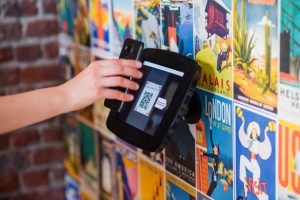Last updated on July 5, 2022
Scanning a QR code to enter into a store during the pandemic or getting your university online assignments by scanning a QR code has become the latest trend. It’s a handy tool used by youngsters mostly and at times adults as well. So let’s see what really this “QR Code” is.

What is a QR code?
QR is the shortened form of Quick Response. QR code is a graphical representation of digital data which can be printed and later on scanned by a smart phone or any other scanning device.
Unlike Bar codes, QR codes are able to store data in both vertical and horizontal axes. Due to this QR codes store more data. The data in a QR code may contain a website URL (link), a PDF file, landing page, questionnaire, video and audio.
Are QR codes dangerous?
A QR code cannot simply be dangerous as it’s a means of storing data. However similar to the way an email can contain a harmful link, a QR code also may contain harmful URLs. Hence visiting URLs linked to QR codes can be risky if you just proceed without getting its legitimacy verified.
How can a QR be dangerous?
- URL in a QR code can direct you to a phishing website to steal your credentials.
- URLs can take you to malicious websites. A malicious URL may open an application on your device to gain access to your data.
- The app used to scan the QR code could contain a vulnerability that allows malicious QR codes to control your device.
- Financial frauds can take place as scanning QR codes has become a popular method of making payments.
- Clickjacking through QR codes. This may happen in a website that imitates the genuine to mislead customers using buttons that download malware.
How to be safe from malicious QR codes?
- Check the QR code for suspicious elements. When you scan a physical QR code, ensure the code has not been tampered with, such as with a sticker placed on top of the original code.
- Avoid using third party applications to scan the QR code. Use trusted apps recommended by the device manufacturer instead.
- Verify the URL – Carefully check the URLs that QR codes direct to and click on the link if it is SSL certified (begins with https://).
Sources:
https://learn.g2.com/qr-code-security
https://theconversation.com/how-qr-codes-work-and-what-makes-them-dangerous-a- computer-scientist-explains-177217

